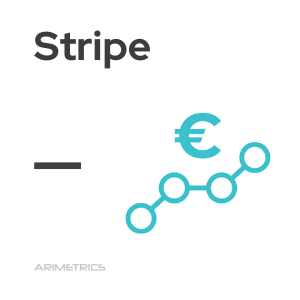
Definition:
Stripe is a platform that allows individuals and companies to receive secure payments through the internet in the style of other platforms, such as PayPal. Its main advantage is that the payment is integrated into the website itself through APIs (Application Programming Interface) or set of commands and computer protocols that allows a developer to create specific programs. That is, it avoids the need to have other providers to make payments and subscriptions, which makes it an excellent option for e-commerces of all sizes.
Stripe was born in 2011 and is based in San Francisco (USA). In the words of Guillaume Princen, director for Southern Europe, the platform arose with the idea of helping entrepreneurs start their business “without having to worry about the complexity of building a payments infrastructure”. Currently, it has nine international offices to try to offer services as personalized as possible.
It is a platform designed so that developers can insert the relevant code on the page, but they also have versions for less advanced professionals. In these cases, it allows its installation directly through the content manager (CMS) used, either PrestaShop, Magento or a simple WordPress, or through one of the tools offered on its page.
Stripe Features
The payment platform offers a series of benefits to entrepreneurs, consolidated entrepreneurs and also to users who make it an alternative to take into account within the payment methods. Among its features, we could highlight:
- It has the highest level of PCI or, what is the same, the Payment Card Industry Data Security Standard. This qualification is awarded by authorized advisors who analyze 12 requirements.
- Its API can be used on both web pages and mobile applications.
- It offers the possibility to customize the payment form and unify it with the design of the page with Stripe Elements.
- It allows periodic collections to fixed customers or punctual sales in an e-commerce, but also payments in person through the Stripe Terminal.
- Ensure fraud prevention with Stripe Radar, a machine learning-based system that learns from transactions on the Web.
How Stripe works
Its use is very simple. The company must register and create a profile with all the data of its online store associated with a bank account. Once the registration has been validated, a process that takes approximately a week, it is enough to insert the code in the e-commerce and customize the payment form to start working. The money will be periodically pocketed in the referred account according to the deadlines agreed with the platform and that can be modified in its control panel.
The user, on the other hand, only needs a bank card (credit or debit) to complete his purchase without leaving the e-commerce. This feature of Stripe can be a double-edged sword, since on the one hand it prevents the purchase process from being abandoned with an unnecessary redirect, but on the other it could provoke the suspicions of the most suspicious users.
Unlike other platforms, Stripe does not require a minimum of sales or set commissions based on these. It charges a fixed fee, which depends on the origin of the card with which it is paid and which is much lower than payment methods such as PayPal:
- Stripe fee for payment by European card: 1.4% + 0,25€
- Stripe fee for non-European card payment: 2.9% + €0.25
